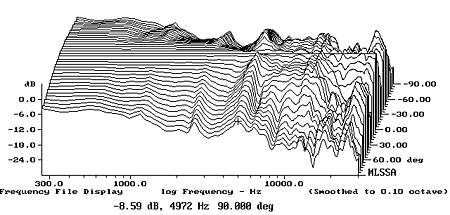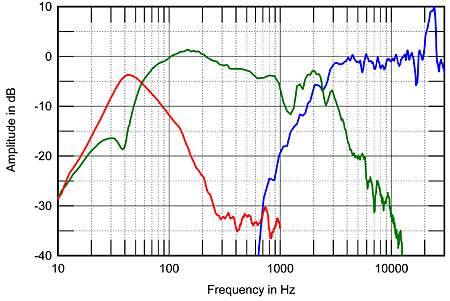" ... Your suggesting that my speakers emphasis 2K-8K freq. range. Which may be the case, but my opinion is they have a linear freq. paired with Bryston amps in these upper freq. ranges. ..."
Well, linear means different things depending on what you're referring to. No loudspeaker I know of, at any price, is without peaks and valleys in the frequency response. Compared to a Bryston amplifier, for example, they are quite "non-linear". This does not mean a loudspeaker cannot be neutral or well balanced vis-a-vis the loudspeaker competition.
If the centre channel is a new addition (i.e. no centre channel speaker before) it's probably installed pretty much totally on-axis with your listening position. I would expect the Paradigms (the left + right) to have wide HF dispersion, but there is always some loss of HF energy off-axis, there are nulls depending on the axis (ie a given frequency may be +2dB referenced to 1 kHz on axis, -2 dB at 15 degrees off-axis, and back to +2 dB at 30 degrees off-axis, etc).
In fact, carefully balancing the on and off-axis response is how most speaker manufacturers build a good in-room versus strictly anechoic response, and certainly this is characteristic of virtually all manufacturers who use the NRC facilities; you could say it's a hallmark of speakers made with the aid of that particular facility.
Below is the dispersion characteristic of the Paradigm Reference Studio 60 v5, hardly a lightweight. To make the first curve, the HF response is plotted as a straight line and the waterfall plots are deviations from that line. In other words, if it's up it's higher energy than the on-axis response of the speaker, if it's down, it's lower energy than the on-axis response.
The actual HF response is not a straight line … this is just the deviation from whatever it actually is. (The actual on-axis HF response is shown in the second graph). Nor should anyone be particularly alarmed by the deviations in the overall response ... again, Paradigm works hard to achieve good in-room response and balance, taking into account the on and off-axis response as a whole. For example the on-axis response has a dip at about 2.5 kHz, but the off-axis response is emphasized at that same frequency, with the result being probably a neutral in-room response. It does illustrate, however, how at any given point, with the speaker firing directly at your listening position and closest to you, how there definitely can be emphasis on one frequency versus it's neighbours.


You may find that the issue is minimized by simply changing the vertical height of your centre-channel speaker with regard to your listening position.
Another possible question I might ask is how, exactly, you're getting the centre channel information in the first place. Is this 5.1/6.1/7.1 source material, or is it being synthesized by an A/V processor from fewer channels?
If it is discreet multichannel, then is it from a compressed multichannel source (e.g. Dolby Digital, DTS, DTS-ES, etc), or discreet uncompressed multichannel (e.g., Dolby TrueHD, DTS HD Master Audio)? Many multichannel disks contain audio which is compressed, which might exacerbate your issue with compression artifacts.
Sibilance is going to exist on recordings, period. Some are better than others ... the mastering engineer will probably use various "de-essing" methods to minimize it, but then again you can't be too aggressive or it affects the program material's overall integrity. Some female voice exhibit sibilance when they speak and you're standing next to them; you don't need a recording chain to manifest it.